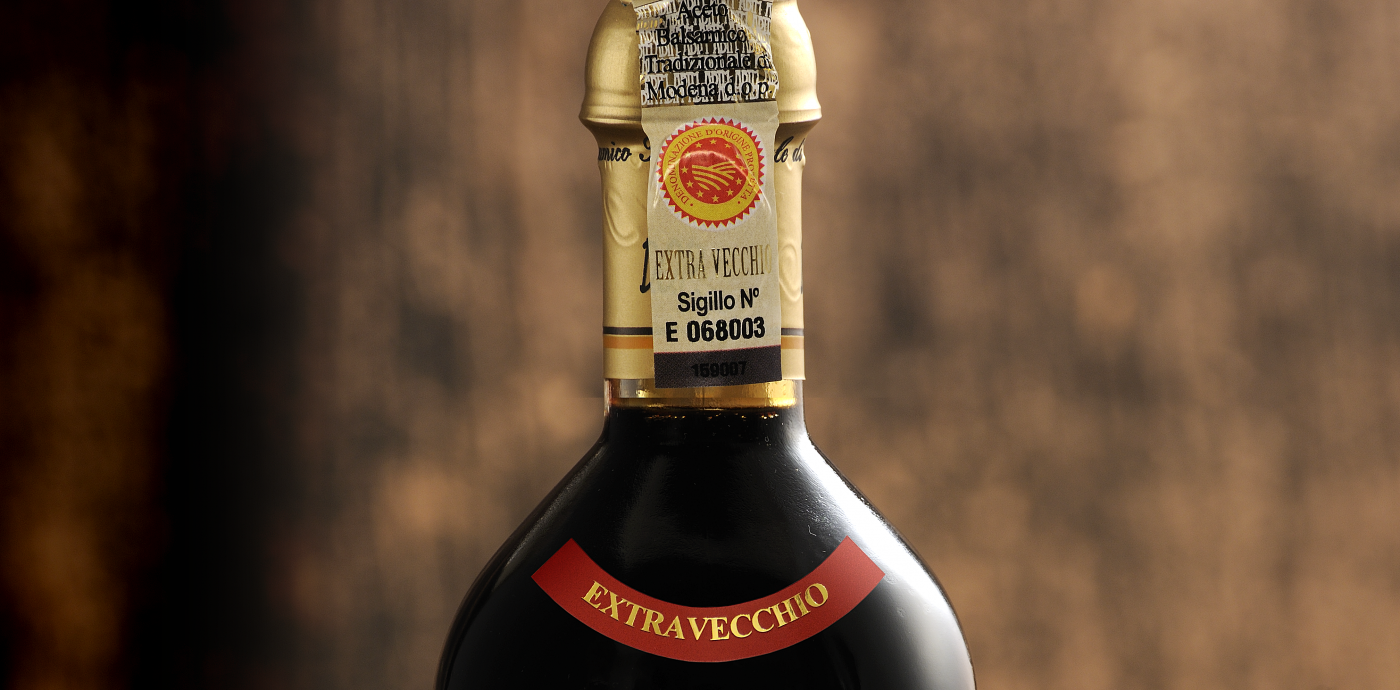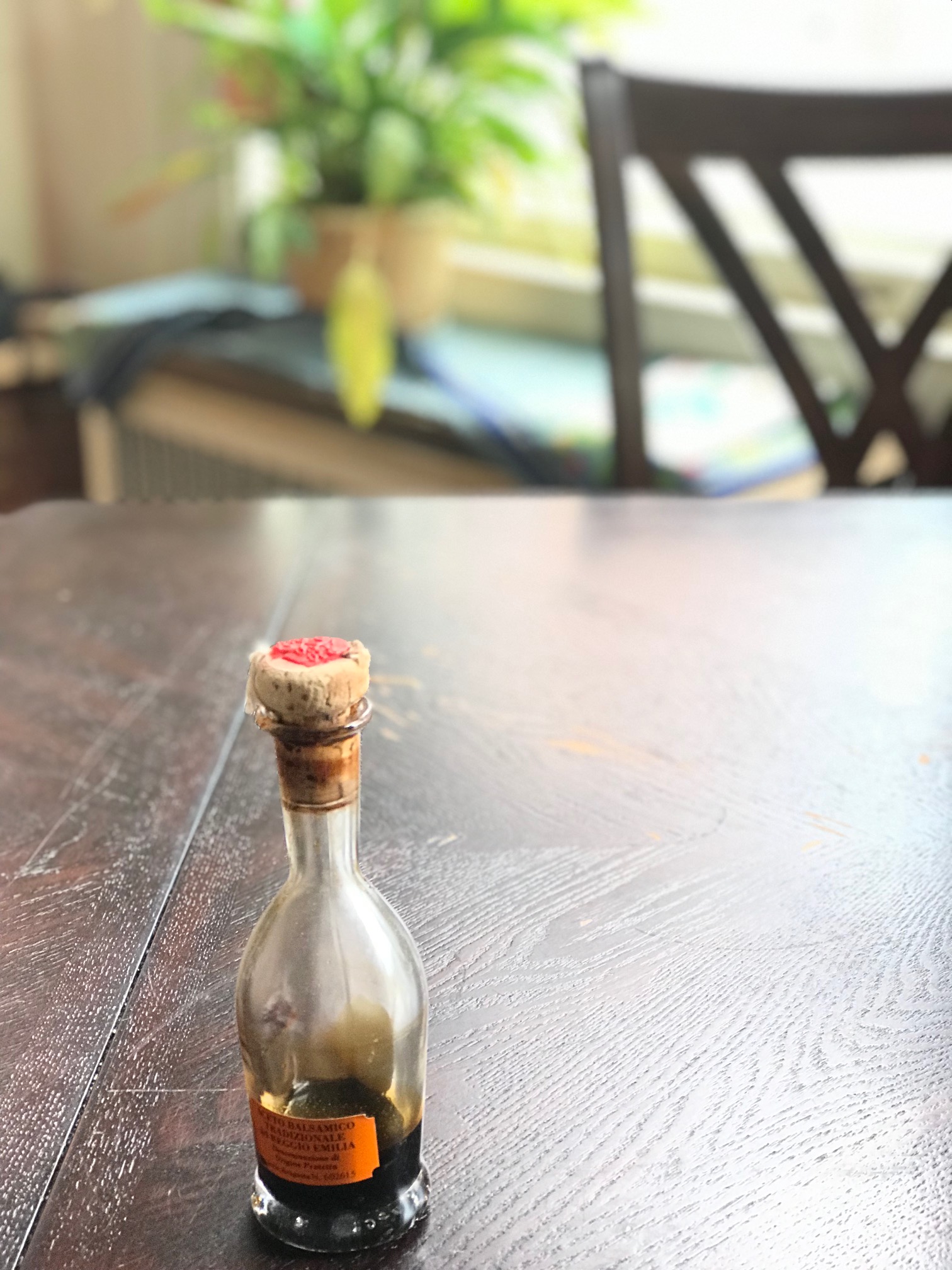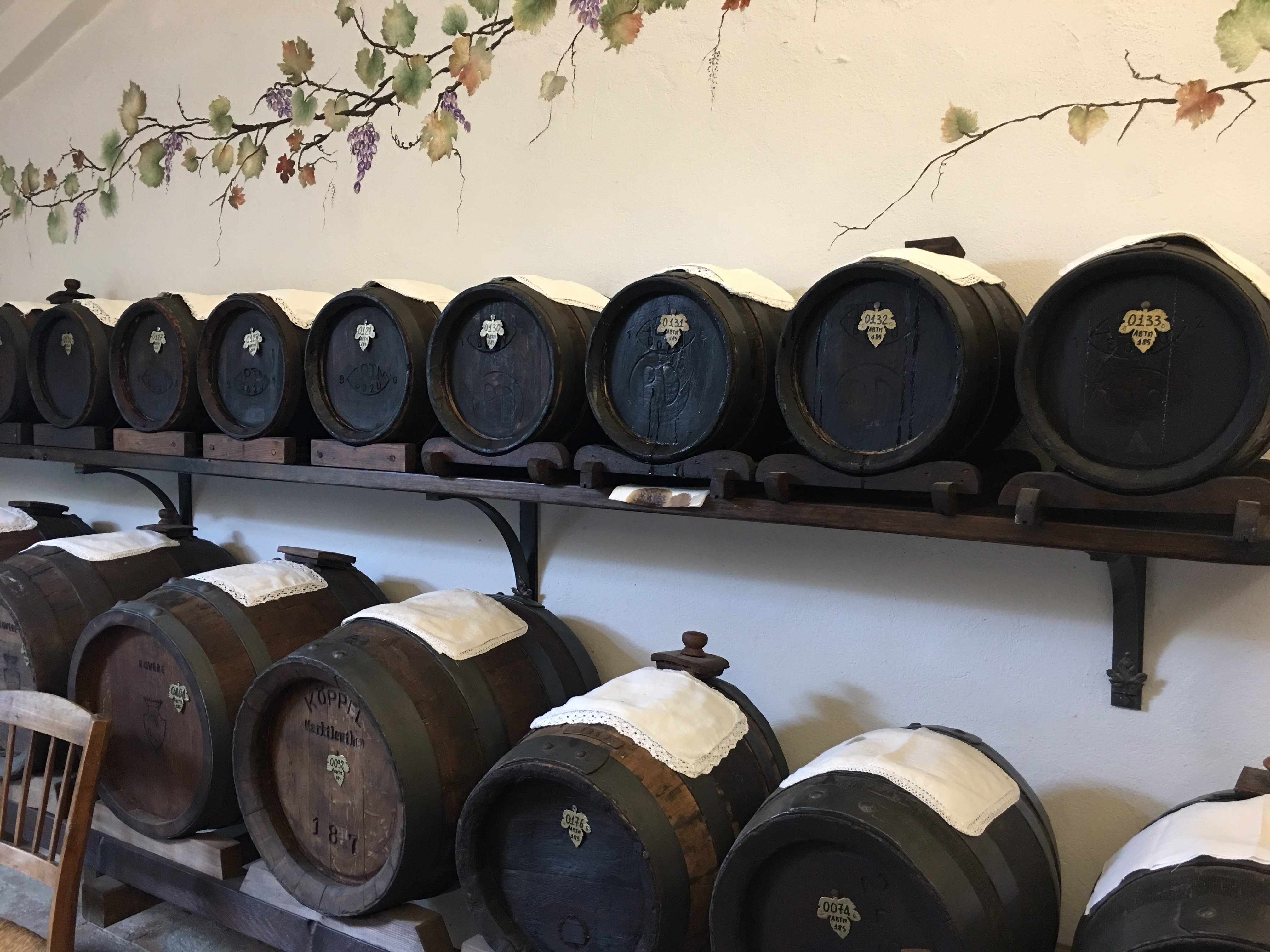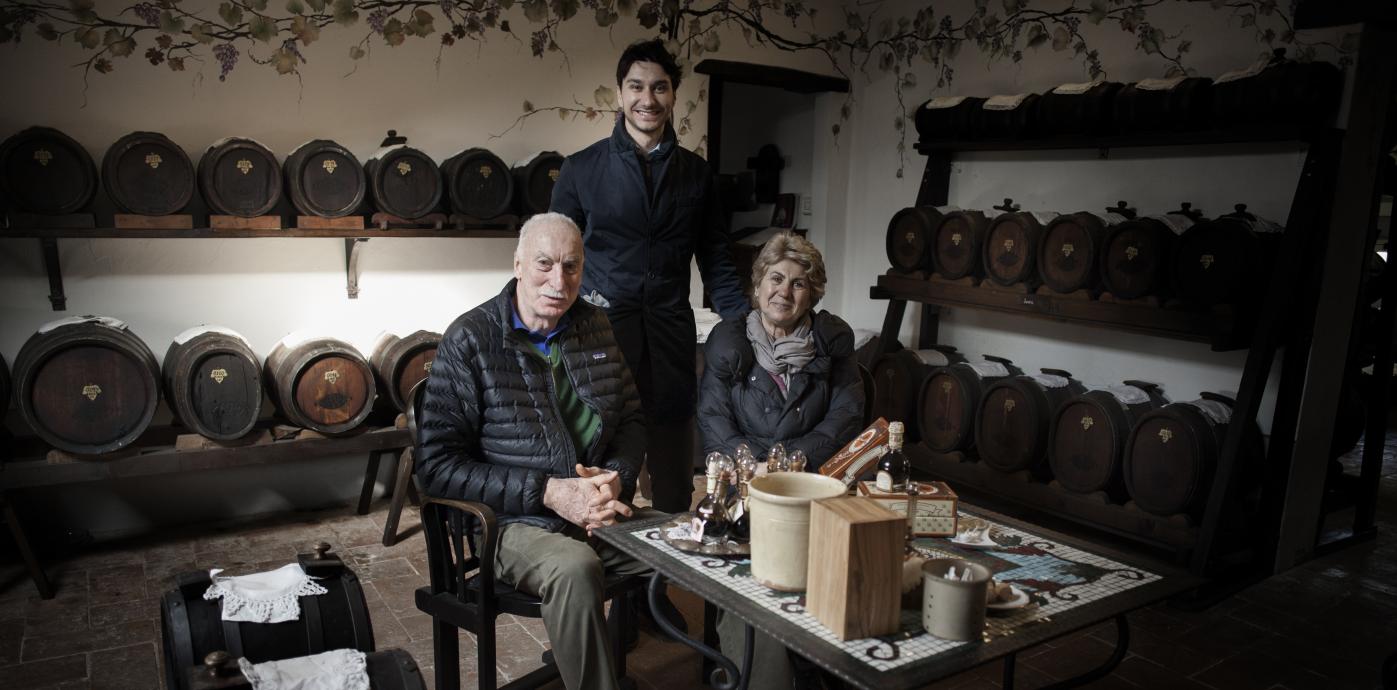When you hear the word Balsamic, what do you think of? Balsamic vinegar salad dressing? Or, maybe Aceto Balsamico Tradizionale? Or, Balsamic glaze? Balsamic Condiment?! It’s actually all of these, and we want you to know each, know the differences, and know how to use them.
Traditional Balsamic Vinegar PDO* (Aceto Balsamico Tradizionale)
The real jewel of all “balsamic” is Traditional Balsamic Vinegar PDO or Aceto Balsamico Tradizionale. It is produced in Modena and Reggio Emilia, provinces of the Emilia Romagna region in Northern Italy. First written about by a monk in a poem in 1046, it has been considered precious by Kings, Popes and Noblemen, and has been used as a miraculous medicine, as a way to enrich the dowries of Noblewomen, and until the last century, as a very refined condiment.
This amazing thick, black syrup is made by slowly cooking grape must (crushed grape juice) from grapes grown in Modena or Reggio Emilia, and then aging it for a minimum of 12 years. Further, to be PDO Traditional Balsamic Vinegar or Aceto Balsamico Tradizionale, there cannot be any other additives. The aging process is also special. Traditional Balsamic Vinegar PDO is aged in at least 5 different size barrels made from different types of wood (cherry, oak, chestnut, juniper and mulberry). This aging process in the unique microclimate of Modena and Reggio Emiliacan can take anywhere from 12 to 100 years and is fundamental to reaching the perfect syrupy consistency and sweet-sour taste of this special Balsamic.
As you can imagine, this long aging process, similar to aged wine, produces a very special product with an equally special price. It is worth every cent! If you see a cheap version of Traditional Balsamic Vinegar in your market, it most likely is not the real deal. You also want to look at the list of ingredients on the label: there should be only one ingredient, cooked grape must (or in Italian, mosto d’uva cotto).
In addition to checking the ingredient list, there are other ways to know you are buying the real thing. Traditional Balsamic Vinegar PDO is bottled by all producers in a specific bottle with the Consortium (Consorzio in Italian) logo and label color that denotes how long it has been aged. The Consortium bottles in Modena are a different shape from those from the Consortium in Reggio Emilia.
To be sure you’re buying the original Traditional Balsamic Vinegar PDO, look for:
(1) the word, “Traditional”
(2) the PDO logo (red and yellow)
(3) the shape of the bottle and the Consortium logo.
This is a really unique product, so we suggest you don’t put it on salad. Use it by drizzling directly on the plate to make a simple recipe extra special: salmon tartare, risotto, a slice of creamy blue cheese. The classic suggestions for Traditional Balsamic Vinegar’s sweet and sour taste is to drizzle on chunks of Parmigiano Reggiano and on fresh strawberries. Of course, it’s also amazing on desserts like panna cotta or gelato and on fruits! Important! Never, ever add Traditional Balsamic Vinegar during cooking, or in two seconds, you will destroy 12 or more years of patient work!
Balsamic Vinegar IGP**
Moving onto other Balsamic Vinegars, Balsamic Vinegar IGP from Modena is the most common and well-known, and is a perfect condiment for salad. Look for the IGP logo (a circle of yellow and blue) on the label, which stands for “protected geographical indication,” and in this case, means the Balsamic was produced in Modena. The ingredients are wine vinegar, cooked grape must or juice (minimum 20%), and caramel, all mixed together, aged in oak barrels for a minimum of 2 months in the Modena and Reggio Emilia areas, and then bottled or left in the barrel to increase the organoleptic profile. You can find the designation “aged” if the aging time was longer than 3 years. This black liquid is a perfect condiment for salads or for cooking.
Balsamic Condiment
Another similar product is Balsamic Condiment, which is basically a compromise between the Balsamic IGP and the Traditional Balsamic Vinegar PDO, and it’s getting more and more popular. This Balsamic is made with more cooked grape juice compared to the younger and more liquid Balsamic IGP. It’s aged a bit longer than Balsamic IGP, but never as long the Traditional Balsamic Vinegar PDO. To check the quality of Balsamic Condiment, you may need to read the ingredients. If you find only cooked grape juice or if this ingredient comes first, it means good quality. Generally, fewer additives means higher quality. Balsamic Condiment is wonderful for a sweeter flavor on salads, or grilled meat. The price should be somewhere between the price for Balsamic Vinegar IGP and the Traditional Balsamic Vinegar PDO.
Balsamic Glaze
Finally, Balsamic glaze is the most industrial product of the group, and the least expensive. The difference? Although it’s made with the same ingredients as the Balsamic Vinegar IGP, thickeners are added to make it syrupy. In Italy, Balsamic Glaze is used for decoration on the plate. Of course, if you love it, use it!
If you can, give each of these Balsamic Vinegars a try. You won’t be disappointed. Even better, when we are able to travel again, take a journey to Emilia Romagna and try these Balsamic Vinegars in the place where they were born. You’ll find Italians love to keep traditions alive. This is one reason why producers still start a new set of barrels when a girl is born in the family. This is no different than the old times when families needed to enrich the dowries of Noblewomen. It’s been said that Emilia Romagna was the only place where Kings and Dukes were much happier to have girls rather than boys.
By Alice Rossi, ExploraEmilia
Parma, Italy
*Protected designation of origin (PDO) is the name of a geographical region or specific area that is recognized by official rules to produce certain foods with special characteristics related to location
** Indicazione Geografica Protetta (IGP) applies to agricultural products or foodstuffs whose qualities and/or reputation are derived from their geographical origin, and whose production and/or transformation or processing occurs in the given geographical area.




